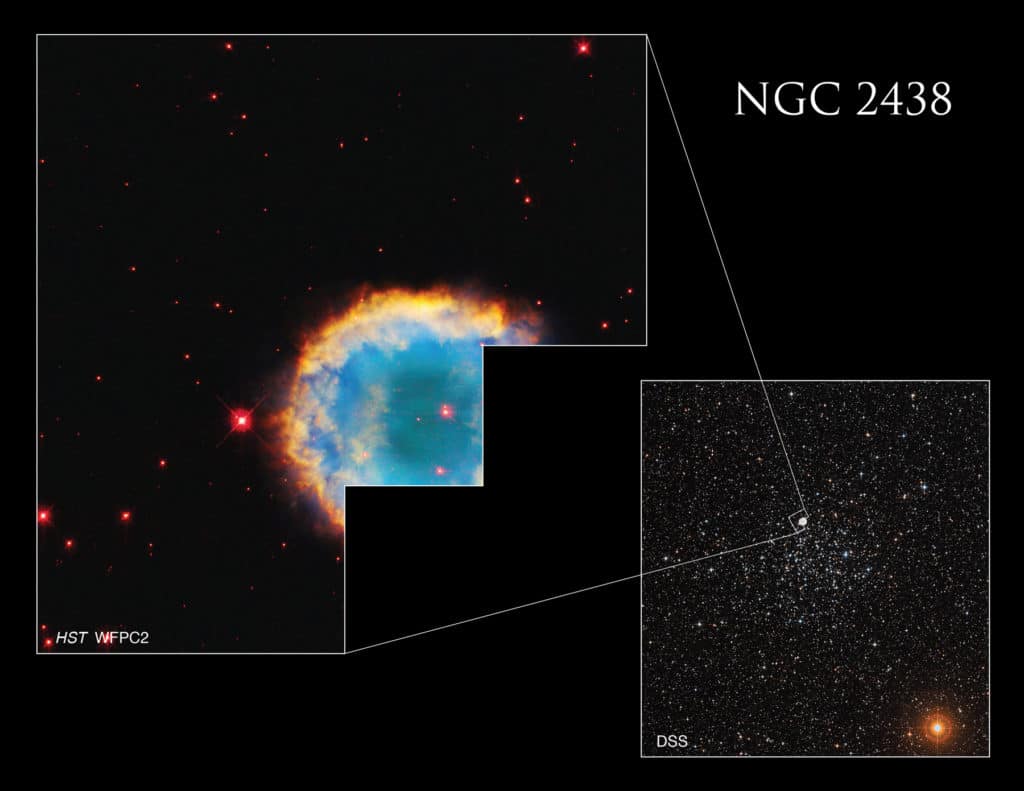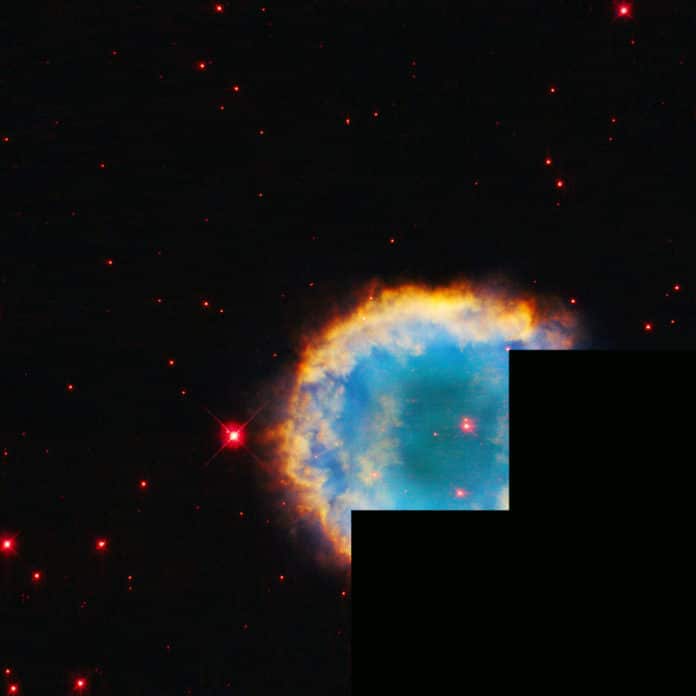NASA/ESA Hubble Space Telescope captured and shared the imaged of a planetary nebula called NGC 2438 that formed after the death of a Sun-like star.
Located in the southern constellation of Puppis, the Nebula is surrounded by a halo of glowing gas over 4.5 light-years across. The reason behind the glow of its halo is the ionizing radiation of the central white dwarf.
NASA reported, “The Nebula formed after its medium-sized star would have expelled its outer layers of gas into space as it died, leaving behind a white-dwarf core.”
Many rounds or nearly round planetary nebulae display these halo structures, and astronomers have been investigating how they evolve. NGC 2438 is one such Nebula.

In this color-filled image, blue represents oxygen (O III), green is hydrogen (H-alpha), orange is nitrogen (N II), and red is sulfur (S II).
